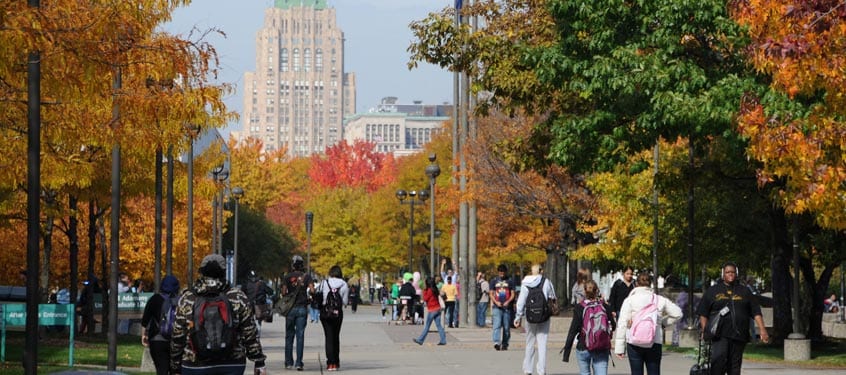This blog explores popular film and media and their relationship to the environment.
Saturday, May 27, 2017
Sunday, May 21, 2017
2017 Association for the Study of Literature and The Environment Conference
Twelfth ASLE Biennial Conference
Rust/Resistance: Works of Recovery
June 20-24, 2017
Wayne State University, Detroit MI
ASLE 2017 Preliminary Program (PDF)Conference Web Site
Registration is now open online: REGISTER NOW
ASLE 2017 Registration Information
Registration form 2017
Registration fee is $160 through April 28, and $80 through April 28 for students, independent scholars, freelance artists and writers, and retirees. After April 28 all rates will increase by $25.
Pre-registration for workshops and seminars is now open. Read the descriptions and how to pre-register. Note: You do not need to be a presenter to sign up for a workshop or seminar.
Special Activities and Events:
- Banquet and dance at the Charles H. Wright Museum of African American History
- Special panels and presentations, including one on water + activism in Detroit, a special ASLE-Grant funded walking tour panel, “Articulating Detroit,” and a presentation by the 2015 and 2016 Community Grant winners on their projects.
- Field trip options, including the Belle Isle Aquarium Laboratory and Field Station, Arab American National Museum, an Urban Garden Tour, cycling tour, and volunteer opportunities
- Progressive evening in Midtown Detroit, including music, a radical poetry reading at Museum of Contemporary Art Detroit (MoCAD), and other artistic endeavors.
- Special movie screening of Watermark at the Detroit Film Theater at the Detroit Institute of Arts

The University and the City
Founded in 1868, Wayne State University is a nationally recognized metropolitan research institution offering more than 380 academic programs through 13 schools and colleges to more than 27,000 students. Wayne State’s main campus in Midtown Detroit comprises 100 buildings over 200 acres. WSU is home to students from nearly every state and 60 countries — the most diverse student body among Michigan’s 15 public universities.A large urban redevelopment movement is taking place in the city. Detroit has the look and feel of a big city when it comes to things to see and do, but the community spirit of a much smaller town, which makes the city unique. Detroit is a thriving cultural hub, and there are numerous historical and architectural masterpieces concentrated in family-friendly neighborhoods within walking distance of Wayne State University. The campus itself is located in Detroit’s Cultural Center and is surrounded by museums, galleries, theatres, restaurants, and other attractions. To learn more about Wayne State and attractions and activities in Detroit, see http://wayne.edu/culture/detroit/
Enchanted (2007) and Interdependence in Animated and Live-Action World
As an animated comic evolutionary narrative Enchanted responds to the series of
animated fairy tale features that have been part of Disney fare since 1937’s Snow White. In Enchanted, as in Snow White,
Sleeping Beauty, and Cinderella, the female protagonist, Giselle
(Amy Adams), follows a comic evolutionary narrative that maintains an
interdependent relationship with nonhuman nature.
In the animated space of the film’s opening, forest
animals from blue birds to rabbits and an owl follow the pattern of the earlier
Disney films and help prepare her for marriage by replicating the figure of a
prince (James Marsden) whom Giselle encounters in the forest and then, after
she and the prince are engaged, coifing her hair and dress on the way to the
wedding.
In the live-action world Giselle enters when pushed
into a well, she establishes a similar interdependent relationship with
nonhuman nature, but she is now in an urban setting and summons pigeons, rats,
and cockroaches instead of woodland creatures when she hums her working song.
The animals help her clean her new friend’s (Patrick Dempsy) apartment in a
scene that comically points out the ridiculous nature of this conceit.
When mice and bunnies become rats and cockroaches,
they no longer meet the “cute” standard of Disney films, but they serve a
similar ludicrous role—serving a Princess-in-Waiting by cleaning her house and
sewing her clothing.
Yet in Enchanted,
nature and culture, nonhuman and human nature, meet head on and, in fantasy,
demonstrate the effectiveness of comic evolutionary narratives based in
interdependent relationships. Enchanted
demonstrates how a mix of animation and live action may also point to the
necessary alliance between the worlds of nature and culture.
Wednesday, May 10, 2017
A New Look at Vampires and Native Soil
At least since the 1897
publication of Bram Stoker’s Dracula,
the need to sleep in native soil has been an integral part of the vampire myth.
For example, one of the novel’s narrators, real estate representative Jonathan
Harker, remarks on the “earth placed in wooden boxes” (54) and on “a pile of
newly dug earth lay the Count!” (54), while exploring Dracula’s castle. Later
we learn that the Count has transported “fifty cases of common earth” (244) to
his new home in England and that it is best to attack Dracula at certain times
when he has “limited freedom” (258). As the journal entry asserts, “whereas he
can do as he will within his limit, when he have his earth-home, his
coffin-home, the place unhallowed, as we saw when he went to the grave of the
suicide at Whitby, still at other times he can only change when the time has
come” (258). These comments in the novel emphasize the importance of home and
earth in the Dracula narrative.
This connection between
vampires and their native soil continues in films from adaptations of the novel such
as Nosferatu (1922), Dracula (1933), The Vampire Returns (1944), The
Horror of Dracula (1958), Dracula
Rises from the Grave (1967), and Bram
Stoker’s Dracula (1992), to genre stretches such as the popular Van Helsing (2004, 2012) and Underworld (2003, 2006, 2009, 2012)
films, the coming of age tale, Let the
Right One In (2007), or the comedy, Vamps
(2012). As in the Dracula novel, these vampire films underline the connection
between soil and home, and consequently emphasize their link to ecology,
literally the study of homes. Although some popular media representations of
vampires eschew traditional vampire mythology altogether, many do include some
version of native soil, even, as in novelist Chelsea Quinn Yarbro’s Saint Germain Chronicles series, placing
it in a hidden compartment within the heels of vampires’ shoes.
Early in the novel Dracula, however, Count Dracula broaches
another connection with native soil that moves beyond his need to become
reinvigorated in his nation’s earth. When describing some of the “strange
things of the preceding night” on the journey to his castle, Dracula connects
soil with blood, declaring to Harker, “there is hardly a foot of soil in all
this region that has not been enriched by the blood of men, patriots or
invaders” (25). This direct relationship between blood, soil, and vampires is
overlooked in most representations of vampires in popular culture, despite its
origin in Stoker’s novel.
The Pack and
Strigoi examine this interconnected
relationship between blood, soil, and vampirism, highlighting the environmental
underpinnings of the vampire myth in relation to a shattered ecology or home.
This connection between ecology and home illuminates the truly interdependent
relationship between human and nonhuman nature illustrated by both The Pack and Strigoi. The roots of that connection rest with the human ecology
movement, which grew out of the work of human ecologist Ellen Swallow Richards.
Destroying that human ecology may lead to what clinical psychologist Tina
Amorok calls an “eco-trauma of Being” (29). In both The Pack and Strigoi,
vampires rather than eco-trauma are the product of this devastated home, a soil
desecrated by blood of war or exploitation of human and nonhuman nature. In The Pack and Strigoi, a mistreated earth bites back.
Subscribe to:
Comments (Atom)






































